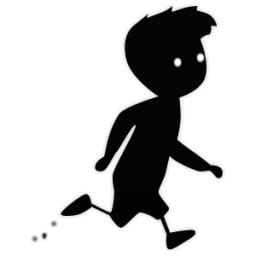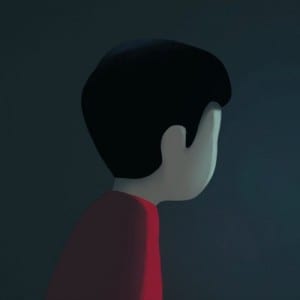Many factors combine to determine the degree to which a character appeals to people. A character need not be attractive in the conventional sense of being pleasant to look at, but he must be competently constructed – well drawn or well described. His various attributes should work together harmoniously; his body, clothing, voice, animations, facial expressions, and other characteristics should all join to express him and his role clearly to the player. Characters should be distinctive rather than derivative. Even a stereotypical character should have something that sets him apart from others of the same type.
The goal of character design, then, is to create characters that people find appealing (even if the character is a villain, like Darth Vader), that people can believe in, and that the player can identify with (particularly in the case of avatar characters). If possible, the character should do these things well enough, and be distinctive enough, to be highly memorable to the players.
In modern video games, almost all of the characters (with a few exceptions) have a visible manifestation in the game. Becuase of this you will need to display your characters, and the way those characters look will have an enormous impact on the way players feel about them. Many designers, especially those who are visually inclined, start to create a character by thinking about her visual appearance first. If the character doesn’t exhibit a complex personality and she doesn’t change much during the course of the game – either behaviourally or visually – then this is often the best way to do it. Such as approach is called art-driven character design. It works well for games with fairly simple, cartoonlike characters. The art-driven design also makes a lot of sense if you hope to exploit the character in a number of other media besides video games: comic books and toys, for example.
Character design types:
– COOL –
- Never get too upset about anything
- The essence of cool is detachment
- Rebellious attitude toward authority often accompanies cool.
- Cool characters are often drawn as insouciant when standing still, their game actions (jumping, running) are usually fast and focused.
– TOUGH –
- Exemplify physical aggression. Often male, although Lara Croft would be classed as a tough character – they are frequently drawn with exaggerated height and bulk.
- They use large, expansive gestures and tend to talk with their fists.
- The animation is big and abrupt, fast moving and aggressive.
- Postures that lean forward, implying motion and action even where there is none, are common.
– CUTE –
- Drawn with the proportions of human babies or baby animals: large eyes and oversized heads.
- Rounded rather than angular bodies, dress in light colors, and have a general demeanor of cheerfulness, although they may exhibit moments of irritation or determination.
- Mario is the ultimate cute video game character.
- Animations usually allow characters to achieve things that they physically could not accomplish in the real world: jumping wide gaps, climbing long ropes, firing weapons larger than themselves.
- They usually look innocent and detached.
– GOOFY –
- Slightly odd proportions and funny-looking, inefficient walks and other movements.
- Comedic behavior.
- Like cool characters, they are seldom upset by anything for long, but their physical awkwardness means that they are not cool.
- Crash Bandicoot is a goofy character.
- Goody animation is fun as long as it doesn’t affect the player’s experience of the game. Tripping while running can be humourous but if the character dies because of the visual joke, the player won’t appreciate it.
These are certainly not all of the character types possible and for the most part, these are Western classifications. Art styles vary wildly among different cultures, particularly for characters.
DESIGN RULE – Don’t add too much detail.
Every character in a story plays a role. The moment a character appears for any reason, the audience needs to know something about him. for minor characters, appearance and voice may convey all the information the audience needs. Major characters need richer personalities, however, and to design them you will have to envision the character in your head then answer a large number of questions about them. Questions to consider are:
Where was the Character born?
What was his or her family life like as a kid?
What was his education?
Where does he live now?
Describe his job.
Describe his finances?.
Describe his taste is clothes, books, movies, etc.
What are his favorite foods?
What are his favorite activities?
What are his hobbies?
Describe any particular personality traits and how they manifest?
Shy or outgoing? Greedy of giving?
Does he have a quirk?
Does he have superstitions?
Does he have phobias?
What were the traumatic moments in his life?
What were his biggest triumphs?
Describe his important past romances.
Describe his current romantic involement/involvements.
How does he treat friends? Lovers? Bosses? Servants?
Describe his political beliefs, past and present.
Describe his religious beliefs, past and present.
What are his interesting or important possessions?
Does he have any pets?
Does he have unusual talents?
What’s the best thing that could happen to him?
The worst thing?
Does he drink tea or coffee?
Obviously, these questions are for you more average joe human as opposed to the realm of fantasy characters.
Character dimensions:
– ZERO-DIMENSIONAL –
- Exhibit only discrete emotional states
- No continuum of states; that is, the character’s emotional state never move smoothly from one state into another or shows evidence of being in two states at the same time; there is not such thing as “mixed feelings”.
- Emotional simplicity can make them more comedic.
– ONE-DIMENSIONAL –
- A character whose attitudes do not change much throughout the story
- Remains mostly neutral
– TWO-DIMENSIONAL –
- Characters described by multiple variables that express their impulses, but those impulses don’t conflict. Such variables are called orthogonal; that is, they describe completely different domains which permit no emotional ambiguity.
- Two-dimensional characters have multiple, non-conflicting impulses.
– THREE-DIMENSIONAL –
- Characters have multiple emotional states that can produce conflicting impulses. This state of affairs distresses and confuses them, sometimes causing them to behave in inconsistent ways.
- Three-dimensional characters can have conflicting impulses that produce inconsistent behavior.
Summary
Characters such as the ones from LIMBO and INSIDE I find incredibly interesting as there is very little given away about the character in their designs. Their look is very ambiguous and abstract, about all you can tell is perhaps their rough age based on the size and the ‘innocent child-like’ style. The boy from inside is especially interesting because he has no face and doesnt really have any sort of personality traits. This is completely different to the character Alex from Oxenfree whose design represents her personality perfectly as an outgoing teenager. However what really makes Alex’s character come to life in the game is her voice within the game. The voice acting gives her personality and suits her character design really well to make her intirely relateable to the player.
For the player in my game I wanted to take these two character styles and see how they would work together. The ambiguios and simple design of a character but with added audio voice acting to give her personality within the game. I also knew that i wanted to replicate the innocense and child-like nature of these characters in her design to make the player feel greater empathy for the chracter when playing. Although the character may not be entirely relateable as far as her look the voice acting will give her some relatability and humanise the character.
Source:
Adamns, E. (2010) Fundamentals of Game Design. Berkely, CA: New Riders.


